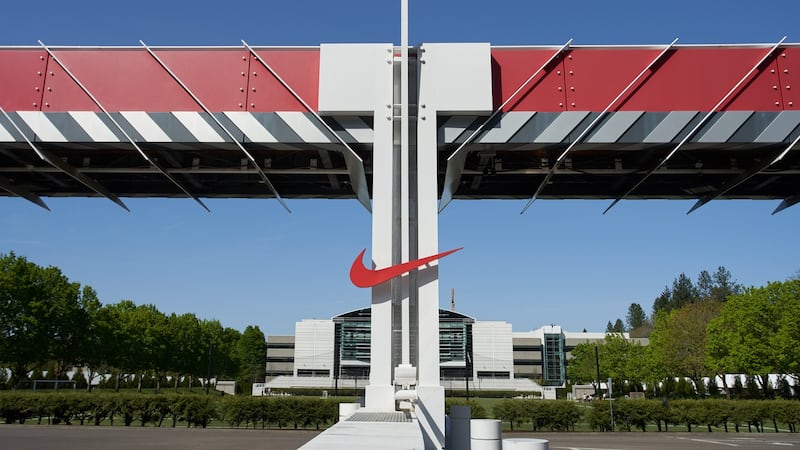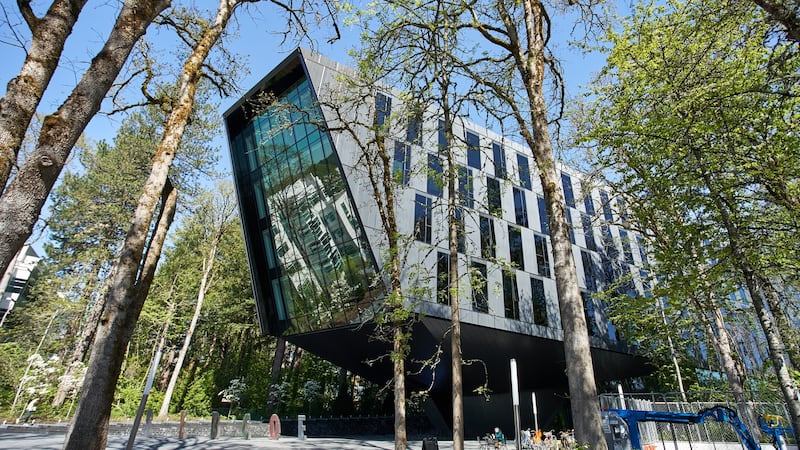The last time I was in Beaverton, Oregon was the spring of 1998, a week after running the World Cross Country in Marrakech, and there is always something faintly familiar about the scent and scene of a place you’ve been before.
I had just changed sponsors and was running in new Nike shoes at the World Cross Country, that one weekend where I suddenly got my running career right back on track. Afterwards I was invited to visit the Nike HQ in Beaverton, just outside of Portland, Oregon, although back then it wasn’t quite the campus it is now.
I stayed in Portland and ran along the river trail, two nights, three runs, covering 24 miles, with quite a few sit-ups and push-ups in my room in between. It was a change of scenery though not quite a break, a welcome visit to Nike where there was a big banner to greet the newly crowned double WXC champion. I signed a new contract and stocked up on as much free gear and shoes in the Nike supermarket as my bags could hold, not really thinking about if or when I might be back.
Now fast forward 23 years, to the Nike Campus of 2021, and I can hardly recognise the HQ amidst the sprawling campus; 75 buildings across 300 acres, most named after global sports stars across all sports.
Running has always been the core of Nike and is well represented with the Seb Coe, Joan Benoit Samuelson and Steve Prefontaine buildings; even the iconic Pegasus running shoe gets a named building along with Michael Jordan, Pete Sampras, Serena Williams, Tiger Woods and so on.
This time I have a specific role here, assistant coach to Pete Julian at a new Nike training group, and the chance to work with some of the best distance runners in the world.
His group originally fell under the Nike project umbrella founded by Alberto Salazar even though they were always two separate groups wearing the same uniform. When this group disbanded in 2019 in the aftermath of Salazar’s four year ban from athletics, Julian continued on with his athletes as he was always separate and in no way implicated.
I am staying about a mile from the track and I have an old butcher-style bike as my transport. There is a surreal ghost-town feel about the Nike Campus right now, a skeleton workforce mainly taking care of the sports fields and gardens, with most working from home. There is normally over 12,000 staff on site. Otherwise it’s all fairly normal, even if Oregon is one of the current worst states with Covid-19 cases.
Adrenalin and energy
It’s a clear cycle through the main gateway arch. Everywhere you look the mark of a global sports star jumps out at you. Giant imposing posters decorate the campus, including our own Rory McIlroy. It’s a bit like cycling through a sporting theme park without the crowds, the adrenalin and energy is still there just looking around and taking it all in.
The only hive of activity is the Michael Johnson five-lane running track where athletes gather to train daily. This is no ordinary track, with a fully grown forest of trees growing inside the track as athletes disappear around the top bend. The most oxygenated track in the world, they say, also made from 50,000 recycled sports shoes.
This has become my new office since arriving in Oregon just over a week ago. It takes me 10 minutes to cycle across campus to the track on the far side, a different route each time spotting different sporting landmarks along the way.

Training starts at 10am; that gives time for me to get in my own run early across campus, through Ronaldo field, around Lake Nike, to my favourite 2.5km loop around Nike Woods, time to think and plan out the day ahead.
As every runner knows, once you get your daily run in, you are ready to take on the world. Back in 1998, I was up at 5am running along the Portland River, finished before breakfast, then wondering what I would do with the rest of the day before heading back out again along the river in the evening.
For today’s athlete here, training is the day job, and there is no rush to get on with the day because practice is the day; more than just running with gym work, drills and recovery all weaved into the daily schedule.
There are no great secrets here either, just session after session and an accumulation of weeks and months and years of training, warm-ups, drills and strength work in the gym.
Running-specific exercises
Things have changed a lot since early days when you could get away with sit-ups, push-ups and dips. Basic strength work has been developed to more running-specific exercises that don’t just help with being a better runner but also helping the body to stay strong and avoid injury which is the most important aspect when trying to continually improve as an athlete year on year.
There is a positive energy all around, with the eyes firmly fixed on Tokyo. First up are the US Olympic trials, starting on June 18th in the new state-of-the-art stadium in Eugene, just hours away. No secrets there either, with the first three across the line automatically selected to the US team as long as they have the qualifying time. No arguments or excuses.
One week after getting to grips with the athletes and set-up, it’s time to pack up and head to the mountains. Park City, Utah sits at 7,000ft, (2100m), where the rarefied air depleted of oxygen means just walking around is that bit harder. You burn more energy and have to work harder to achieve the same levels of training at sea level. The old theory being, as well as increasing fitness you will also find the effort less to race at a high level on the return to sea level.
By now, all the athletes and coaches here have been vaccinated to ensure ease of travel to races most weekends and the ability to safely mix with others and continue to train uninterrupted as the Olympics are now looming just 79 days away. You can only prepare and be ready. It’s not a time to wait and see because once the green light is given there will be no time to play catch up.

It so far from the fire I feared I might be entering when arriving in America from Australia, a country on the other end of the spectrum with very few active cases. Airports are starting to regain life and there is hardly a spare seat on the plane; masks are compulsory but that’s a small price to pay for freedom to travel.
In all this athlete-centred bubble there is no talk of the uncertainty that still surrounds the Olympics in some people’s heads, if you dare to read the newspapers or tune into general media sources. You have to believe that there is a finish line in Tokyo that we are all working towards, anything else would burst the bubble of every Olympic athlete’s dream and world.
















